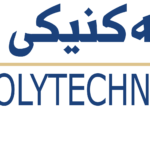- Mohammed Qader Mustafa
- [email protected]
- 0750 902 3737
- Immunophenotyping and IL-18 Promotor Gene Polymorphism in Acute Lymphoblastic Leukemia in Erbil - Print
-
Acute Lymphoblastic Leukemia (ALL) is a malignant neoplasm of the hematopoietic system that primarily affects children. The pathogenesis of ALL is complex and multifactorial, involving various genetic, epigenetic, and immunological factors. This study aimed to investigate ALL patients' immunophenotyping and DNA polymorphism of the IL-18 gene (rs1946518) and explore their potential clinical implications.
In this study, a total of 51 patients with ALL were enrolled. The average age of diagnosis was 8.7 years. Out of these 51 patients, 32 were selected for molecular studies, while 10 children were included as control subjects to analyze further the molecular data, 10 random samples out of the 32 PCR products were chosen for Sanger sequencing, and their clinical characteristics, including age, sex, and subtype of ALL, were recorded. A complete blood count (CBC) was performed to assess the hematological parameters of the patients. The expression of several CD markers, including cTDT antigens, human leukocyte antigen-DR(HLA-DR), cytoplasmic myeloperoxidase, CD117, cCD79a, CD56, CD34, CD33, CD22, CD19,CD11b, CD10, CD7,cCD3, CD2, was analyzed using flow cytometry. Genotyping of the samples for IL-18 gene polymorphisms was conducted through Tetraprimer Amplification Refractory Mutation System Polymerase chain reaction(T- ARMS PCR). Also, the promoter region of the IL-18 gene was amplified through Polymerase Chain Reaction (PCR), and any mutations or Single Nucleotide Polymorphisms (SNPs) was analyzed via Sanger sequencing. Additionally, genotyping of the samples for IL-18 gene polymorphisms was conducted through Tetraprimer Amplification Refractory Mutation System polymerase chain reaction (T-ARMS PCR).
VI
The results showed that most patients (75.8%) had pre- or common B-ALL, while 12.1% had T-lymphoblastic leukemia (T-ALL) , 9.1% patients had Pro- B ALL and 3% patients had Burkitt's lymphoma. Significant differences were observed in CD marker expression between patients with different CD expressions, with CD19+, CD79a+, and CD10 associated with a higher blast percentage. There seemed to be variations in CD marker manifestation among the age groups below 15 and above 15 years. CD79a, CD22, CD19, CD10, TdT, HLA-DR, and CD123 were commonly expressed positive CD markers, whereas CD45 had moderate to low expression and was not associated with these markers. In terms of IL-18 gene polymorphisms, 100% of the control population had homozygous wild-type alleles, while six patients (18.75%) had heterozygous (CA) alleles, and four patients (12.5%) had homozygous (AA) alleles. The remaining 68.75% had 2 polymorphic alleles on the promoter’s region. The current study identified 23 mutations through Sanger sequencing for 10 random samples in the promoter region of the IL-18 gene, including SNPs, insertion, deletion, and duplication. There were 11 types of variation, with 14 being sense and 9 being non-sense mutations. The study also discovered 3 previously unknown (Novel) SNPs, which increases our knowledge of genetic variation in the IL-18 gene.
In conclusion, this study highlights the importance of immunophenotyping and DNA polymorphism analysis in understanding the pathogenesis of ALL and its potential impact on patient management. The findings suggest that specific CD markers and IL-18 gene polymorphisms may be associated with a higher risk of developing ALL. Further research is needed to investigate these associations in more detail. This study provides valuable insights into the molecular and immunological mechanisms underlying ALL and lays the groundwork for future studies.
- Erbil Technical Health College
- Medical Analysis
- Hematolog
- Hamad Mustafa Saleh
- [email protected]
- 0750 467 5095
- Hamad Mustafa Saleh
-
ABSTRACT
The current serologic and molecular research work was designated to reassess endemicity of Toxoplasma (T.) gondii which is reckoned a ubiquitous zoonotic protozoan among aborted women, ewes, and does in Erbil, the Kurdistan region of Iraq. To meet the requirements of the survey, 80 aborted women, who attended both Maternity Teaching Hospitals in Erbil and Soran, were examined serologically and molecularly from November, 2021 to Abril, 2022. Moreover, 55 aborted ewes, and 30 aborted does were chosen in afore-mentioned cities at the same period and tested serologically and molecularly as well. The seroprevalence of the parasite demonstrated that 18/80 (22.5%) of aborted women had anti-toxoplasma IgG and the rest were negative. On the other hand, 4/80 (5%) women were harbors of anti-toxoplasma IgM and the rest were negative. Furthermore, the seroprevalence of the parasite demonstrated that 13/55 (23.63%) of aborted ewes had anti-toxoplasma IgG and the rest were negative. On the other hand, 2/55 (3.63%) ewes were harbors of anti-toxoplasma IgM and the rest were negative. Despite that, the seroprevalence of the parasite demonstrated that 8/30 (26.66%) of aborted does had anti-toxoplasma IgG and the rest were negative. On the other hand, 1/30 (3.33%) does were harbors of anti-toxoplasma IgM and the rest were negative. The occurrence of amplification of fragment was 100% of the toxoplasma samples. As well as, the expected patterns were provided in the samples with T. gondii. The result showed that the Toxoplasma species (Women 1, Ewes 2, and Doe 1) was 100% and ewes 12, does 7 were 99.9% homologous to T. gondii under the accession number (KX270387 and MK704513) due to nucleotide substitution (A → G) at the position of 207.
- Erbil Technical Health College
- Medical Technology Department (MLT)
- Master at MLT
- Asmaa Ameen Ghareeb
- [email protected]
- 0751 706 6033
- Final Full Thesis pdf.
-
Coronavirus disease-2019 (COVID-19) created a worldwide health problem in late 2019. It was caused by Sever Acute Respiratory Syndrome 2 (SARS-CoV-2), an enveloped RNA virus. The clinical presentation of the disease was found to be variable ranging from mild, moderate to severe. A number of comorbidities such as obesity, diabetes mellitus, organ disorders and age were reported to be associated with morbidity and mortality rates.
The aim of this study was to investigate the association of some laboratory parameters with SARS-CoV-2 infection in Erbil City/Iraq, and to study the circulating Variant of concerns (VOCs) among the infected population through Next Generation Sequencing (NGS) and analysis of the Spike (S) gene.
Throat and nasopharyngeal swabs and blood specimens were collected from suspected cases visited the Central laboratory or admitted to the three COVID-19 specific hospitals in Erbil City/Iraq. The infection was confirmed in 104 patients following RNA extraction and identification by real-time RT- PCR. Then, patients were clinically categorized into mild (n=40), moderate (n=32) and severe (n=32). Blood specimens were also collected from 34 healthy controls. All necessary clinical and demographic information were recorded. Hematological parameters such as lymphocyte count and % and platelet count and other biomarkers (CRP and D-dimer) were measured. Finally, RNA extracts from 15 mild and severe cases were sent to Ankara/Turkey for full S gene sequencing using NGS technique.
Age was significantly associated with COVID-19 (P value= 0.000), in which sever infections were common in extreme ages. No relation was found between ABO, Rh and gender with COVID-19 (P value= 0.41, 0.47 and 0.96
respectively). Death rate was high among sever patients (17(53.1%) as a consequence of multiple comorbidities. Oxygen saturation (SpO2) depressed more significantly in severe and moderate groups than in mild groups. Severe and moderate groups exhibit significantly higher CRP, D-dimer, and lymphocyte% (P<0.05) compared to control group. All the studied biomarkers were significantly higher in non-survivors than in survivors (P<0.001). There was a highly substantial positive correlation between D-dimer and CRP (r= 0.69, P value= 0.000), while a significant negative correlation was observed with other laboratory biomarkers.
The NGS and analysis of the S gene identified two SARS-CoV-2 variants; 13 Delta (B.1.617.2) and 2 Omicron (B.1.1.529). Variants were identified according to the WHO specification of each VOC. On the whole, different mutation classes have been observed including nonsynonymous that constituted the most abundant type of mutation, synonymous, non-frameshift deletions and non-frameshift insertion. L452R, T478K and P681R amino acid variations in spike protein were detected in all Delta isolates and were variant specific. On the other hand, Omicron variants appear with unusual number of mutations (35 mutations). D614G variation was conserved in both variants.
Gender, ABO, and Rh were not associated with COVID-19, but age and a number of comorbidities were significantly associated with disease severity. All studied laboratory biomarkers were associated with mortality. Delta variants showed variations in S gene mutation, whereas both Omicron variants were totally the same. No specific mutations were found to be associated with severity and mortality of COVID-19.
- Erbil Technical Health College
- Medical Laboratory Technology
- Medical Laboratory Technology
- Darawan Bazyan Dhahir
- [email protected]
- 0750 796 9989
- Thesis Submitted
-
A refrigerator is the most common and efficient method for preserving food and medicine, although its continuous operation consumes a considerable amount of energy. Thus, this study investigated and evaluated the overall performance of a household refrigerator with phase change materials (PCMs) and nanoparticles. The PCMs are applied to the evaporator (evaporator cold storage, ECS) and condenser (condenser heat storage, CHS) individually and simultaneously. Also, a refrigerator with dual energy storage (DES) and combined energy storage (CES) is proposed. The former included CHS and ECS and the latter involved CHS, ECS, and PCM panels in the fridge cabinet. PCMs were organic paraffins, inorganic salt hydrates, and distilled water. The energy consumption of refrigerators is assessed using ISO standards. Isobutane (R600a) was a refrigerant in the system. The experiments included the application of multiple PCMs to the condenser and evaporators. PCM with copper oxide (CuO) nanoparticles is tested on the condenser alone. As a result, through extensive analysis and testing, the overall performance of the refrigerator was optimized. The CHS effectively improved the coefficient of performance (COP) and kept the temperature of the cabinets, while the ECS efficiently saved energy and reduced temperature fluctuation within the cabinets. The most significant optimizations were by DES and CES due to the combination of cons and pros of using PCMs on the condenser, evaporator, and fridge cabinet individually. The energy savings for CHS cases, ECS cases, DES, and CES were 10.87-21.24%, 15.21-23.47%, 24.29%, and 26.42%, respectively. The COP improvements for CHS tests, ECS tests, DES, and CES were 1.58-7.56%, 4.35-5.50%, 8.81%, and 9.10%, respectively. Although their temperatures increased, the fluctuation temperature in the fridge and freezer cabinets dropped by 15.53-56.53% and 0.61-26.46%, respectively.
- Erbil Technical Engineering College
- Mechanic and Energy
- Thermo-fluids


